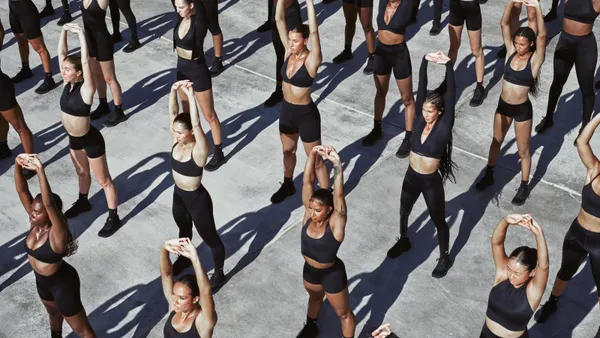Dive Brief:
-
Import taxes allowing brands to charge more even for domestically produced items are a major culprit explaining why women's apparel is often sold at higher prices than menswear, according to research from Texas A&M University and reported by the Dallas Morning News.
-
Texas A&M professor Lori Taylor, the director of the university’s Mosbacher Institute for Trade, Economics and Public Policy, found that tariffs on women’s clothing are often as much as six times higher than on comparable men’s clothing.
-
Women’s clothing made of wool and natural-fiber overcoats, suits, jackets and blazers tend to accrue higher tariffs, while tariffs on men’s clothing manufactured from man-made fibers are sometimes higher, Taylor found.
Dive Insight:
The so-called “pink tax” describes how prices on women’s apparel are often much higher than on menswear, even for comparable items. While brands are often criticized for charging women more for anything from high-fashion to more middle-of-the-road apparel, many have scratched their heads as to why. Texas A&M's Taylor has uncovered one major reason—tariffs—but sees no rationale for it.
“Silk shirts are a biggie,” Taylor told the Dallas Morning News. “The tariff on women’s silk shirts is six times the tariff on men’s. But it’s not just cashmere and fancy stuff. It’s the everyday wool-blend blazer. It’s there on footwear as well. Golf shoes, we pay double. If there’s a reason for that, I’d love to hear it.”
Many policymakers and even courts have deemed the tariff and price differences accidental, but Taylor said her research shows a disregard for fair policy. She began her research in part because she believes the practices are not just sexist, but also an unfair burden on many low-income families. She even questions whether clothing should be taxed at all.
“It’s quirky,” she told the News. “It’s accumulated over time and hasn’t been cleaned up. It’s the result of political compromise, lobbying and a whole bunch of things. And in some sense, it’s irrelevant. The federal government should not perpetuate discrimination by taxing women more heavily than men. They shouldn’t be taxing men three times more than women on swimsuits.”
Taylor said one way to address the inequities is to offer brands the opportunity to pay either the men’s tariffs or the women’s in any given category, whichever is lower. She says that as a university professor she can’t directly lobby for change, but that others could and she hopes they will, now that the facts have been uncovered.
A recent survey of 1,232 American men age 18 and older conducted by public relations firm Boutique @ Ogilvy found that menswear sales are expected to grow 8.3% by 2017 to $110.3 billion, far outpacing the expected 4.2% growth in womenswear sales. The pink tax may be one reason behind the discrepancy.














